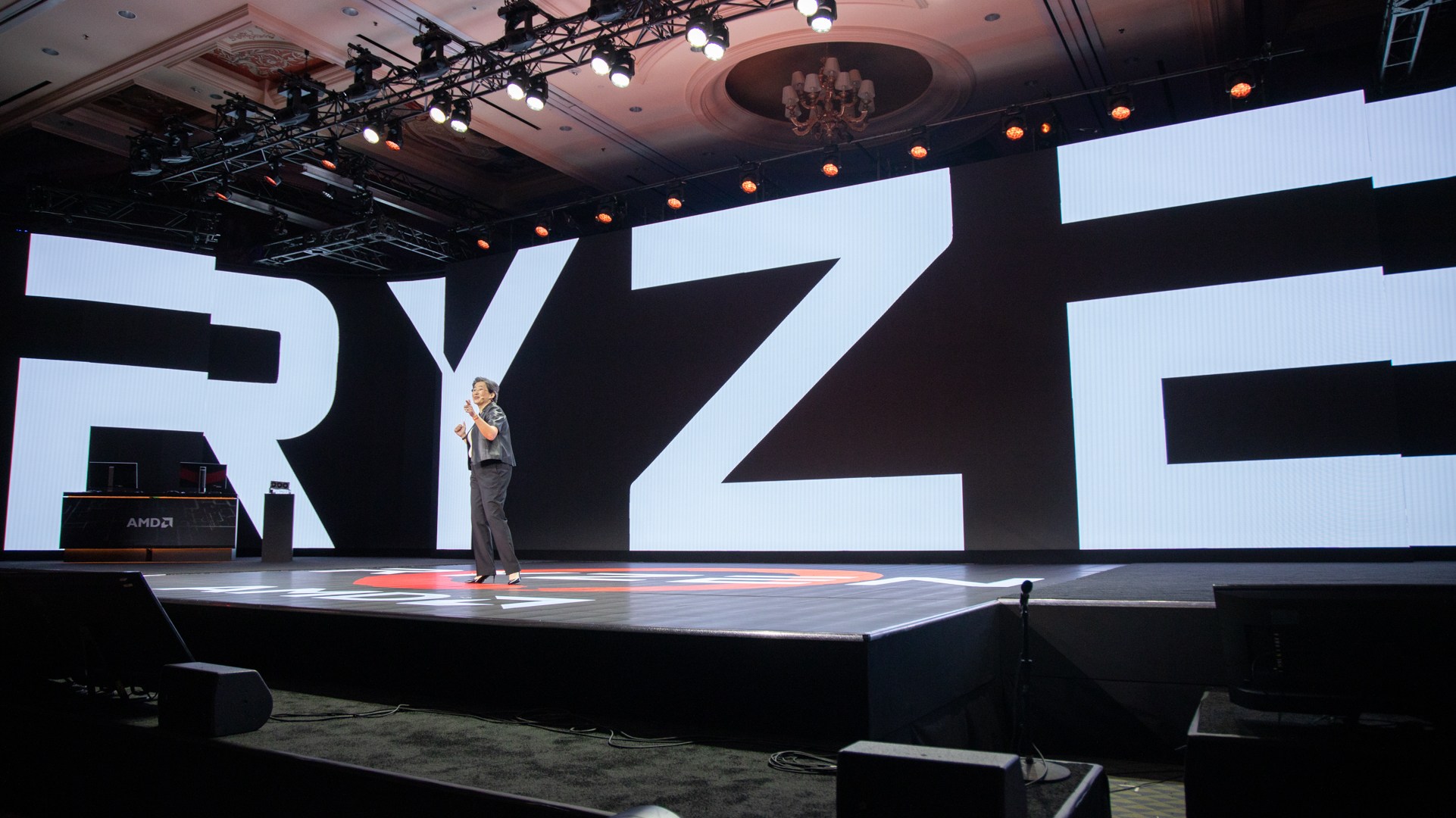It’s usually exciting enough for a single major PC tech company to make an announcement at CES, but when three key players get together and fight it out on the (virtual) showfloor, that’s a once in a decade event and something to pay attention to.
We at Events for Gamers are passionate about both console and PC hardware for all levels of gamers. While our site tends to cater to the professional conference traveler, we’re all gamers at heart and want the latest and greatest hardware available. That hardware typically comes from Intel, AMD, and Nvidia for CPU and GPU components.
We won’t be covering the other components here today even though many other great companies like Asus, Gigabyte, LG, Samsung, and dozens of others could be mentioned for memory, storage, display, and other areas of PC hardware (searchable on our site for references to related reviews.).
Hardware Enthusiasts Rejoice
Competition is almost always a net positive for the consumer. We’ve certainly seen plenty of that in the GPU and CPU space over the last couple of years. With Intel sleeping on its laurels and trying to figure out what kind of company it wants to be seen as in the eyes of gamers, AMD has caught up significantly on multiple fronts both desktop and mobile. Meanwhile, Nvidia being the strong arm of the GPU side of hardware is caught a bit off guard by the strength of AMD also stepping on its turf.
With all three companies at CES 2021 and releasing new products, let’s take a look at some of the highlights they are leading with.
Intel at CES 2021
We were most impressed that Intel finally is moving beyond its 14nm++++++ architecture (Give or a take a ‘+’, but we’ve lost count.) and catching up to the rest of the entire microarchitecture industry with it’s 10nm process. A quick note that Intel’s 10nm is more or less equivalent to AMD’s 7nm process in terms of raw capabilities.
Intel has announced their 10nm mobility line under the Tiger Lake architecture. We are soon going to be able to purchase laptops in Q1 2021 (and eventually desktops under their Alder Lake architecture scheduled for 2H 2021) that drive higher gains in single-threaded performance. There will, of course, be significant gains in multi-core performance and a host of other improvements. For PC gamers into “ultraportable laptops,” the 11th generation Intel H-series will bring Tiger Lake-level features of 10nm chips and bumped-up Xe graphics processing. The 11th generation H-series will start out with lower-power 35W chips, then they’ll eventually rolling out the more powerful 45W versions.
Here is Intel’s CES 2021 keynote in 10 minutes (thanks to Engadget):
It wouldn’t be fair to pick on just Intel out of the gate for nor fully keeping pace with the market demands, so we’ll start Nvidia’s introduction with a reminder how uneven their GPU journey has been, especially in the last few months.
With Nvidia dueling AMD for dominance in GPU hardware (with AMD catching up significantly), the silicon giant may have been a bit cocky about their position in the industry. NVIDIA and AMD both have had to deal with significant supply shortages of their latest GPUs lasting into 2021, with much of their available retail inventory snatched up by resellers’ bots along the way. NVIDIA also had to deal with fallout after “unfriending” review site Hardware Unboxed’s following recent reviews of their RTX cards. That messy issue could have gone more professionally and with less PR spin.
With that asterisk out of the way, Nvidia is a great tech company with a strong portfolio of impressive next gen data-crunching products. Their CES 2021 presentations was no exception. The company featured the new RTX 3060, which was widely expected to be revealed at this event, as an extension to their popular (maybe too popular, as previously noted) RTX-30 series lineup.
In a nutshell, the RTX 3060 will offer 13 shader TFLOPS, 25 ray tracing TFLOPS, 101 tensor-TFLOPS for DLSS,128-bit memory interface, 128 GB GFFR6 memory, Resizable BAR (for enabling FPU memory to be accessed by compatible motherboards), and NVIDIA DLSS, Reflex, and Broadcast features. What does it mean for gaming? It should translate to a 90 FPS performance with ultra-level settings at 1440p (with ray tracing). Some gamers might prefer all of those features but with a resolution above basic HD. For that, the more expensive RTX 3070-and-up GPU cards are the appropriate options to consider. Needless to say, GPU hardware like the RTX 20 and 30-series are increasingly becoming important for gamers that demand crazy high framerates for their latency-sensitive FPS and competitive games. We also don’t mind the bonus FPS for casual open world games, so it’s a win-win progression.
Aside from a smattering of other hardware announcements by Nvidia, I would like to mention our personal excitement about the RTX 30-series coming to mobile products. Finally, given the new CPU announcements such as those by Intel, we are on the cusp of laptops playing games ‘good enough’ as their desktop counterparts. While desktops still reign supreme in a number of areas due to their obvious space benefits. games today don’t scale in demand as they once did a decade or more ago. In short, gaming hardware is becoming ‘good enough’ for any platform of choice… for the most part.
Here is Nvidia’s CES 2021 keynote in 10 minutes (thanks again to Engadget):
Leaving the underdog last with so much ground to cover, AMD has made leaps and bounds over the past couple of years on both the CPU and GPU fronts, including desktop, mobile, and even server complements.
Starting with mobile, AMD announced their “HX” series of mobile processors that aim not only to catch up to Intel in performance but to exceed them. Architecture ingenuity aside, the leaps in performance and efficiency have been possible due to the 7nm process AMD is using. Recall earlier that we mentioned AMD’s 7nm process (which is well in hand) is equivalent to Intel’s 10nm process (that’s finally getting out the door).
We being hardware geeks to the max, I also wanted to mention AMD’s continued focus on gamers, including in laptops. With the Ryzen 5000 processors announcement, designed to go head-to-head with intel in the mobile gaming market space, The Ryzen 5000-series chips are designed for optimal performance in the mobile and gaming markets, with the Ryzen 9 5950X representing what AMD describes as “the world’s best gaming CPU.” The Ryzen 5000 series continues with 7nm chips, but with higher clock speeds and greater instructions-per-cycle performance.
AMD also announced new GPU products to challenge Nvidia’s graphics throne (also with overclocking capabilities of course). Dubbed ‘RDNA 2’, we’re in for an exciting graphics ride with this new generation of GPUs that should compete well with Nvidia’s latest Ampere architecture on most fronts. I say ‘most’ as it looks like AMD is still behind a bit on their RTX efforts, though we fully expect them to catch up.
Here is AMD’s CES 2021 keynote in just 4 minutes (thanks once more to Engadget):



